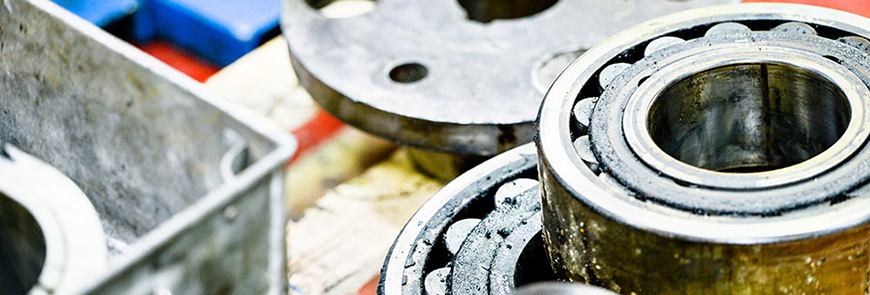
Engineering Basics: Guide to O-Rings
O-Rings are the most widely used seal for they offer an efficient and economical sealing element for a wide range of static or dynamic applications and are easy to use due to their inexpensive production methods.
A broad range of elastomer materials for both standard and special applications allow the O-Ring to be used to seal practically all liquid and gaseous media.
The o-ring manufacturing process is quite straightforward, and the specifics of any given o-ring design and production run generally take
into account required quality, quantity, application environment, cost-effectiveness, chemical and pressure compatibility, longevity and lubrication requirements.
O-rings are usually produced using a variety of manufacturing techniques like extrusion, injection molding, pressure molding or transfer molding.
The purpose of this guide is to help you get familiar with the most common types of O-rings, norms, their design particularities and operating mode,
the way they handle forces, the proper installation and maintenance procedures, as well as the most frequent problems that can cause the damage of O-rings.
CONTENTS
1. Norms
O-rings are manufactured in accordance with a variety of standards for different countries:
| Standard | Description |
|---|---|
| BS 1806 | British standard for inch series O-rings. This standard has the same development roots as the AS-568B standard, and it incorporates some additional sizes. |
| SAE AS568B | American standard for O-rings. AS-568 is the Aerospace Standard (AS) as well as the SAE standard |
| BS 4518 | British standard for metric series O-rings. |
| SMS 1586 | Swedish metric standard |
| DIN 3771-1 | German metric standard for fluid-sealing O-rings. |
| ISO 3601-1 | International standard for metric and inch series O-rings. The second edition includes the requirements for Aerospace (AS) applications. |
| JIS B2401 | Japanese industrial standard for metric series O-rings. This standard now includes the second edition of ISO 3601-1. |
| NF T47-501 | French standard for O-rings. This standard is similar to the ISO 3601 and the DIN 3771 standards with some unique class designations. |
2. Sealing Principle
O-rings are bi-directional seals, circular in shape and cross section.
O-rings are generally made of an elastomeric material, but may be made of other materials such as PTFE or metal.
An O-ring seals through the deformation of the seal material by installation and media pressure to close off the gap between mating components.
Higher system pressures can cause deformation through the gap, known as extrusion, resulting in seal failure.
Choosing a harder seal material or installing back-up rings to support the O-ring may alleviate this problem.
The rubber O-ring should be considered as an incompressible, viscous fluid having a very high surface tension.
Whether by mechanical pressure from the surrounding geometry or by pressure transmitted through the hydraulic fluid or gas,
this extremely viscous (elastomeric) fluid is forced to flow in the gland to produce zero clearance or a positive block to the flow of the media being sealed.
The O-ring absorbs the stack-up of tolerances of the unit and its memory maintains a sealed condition.
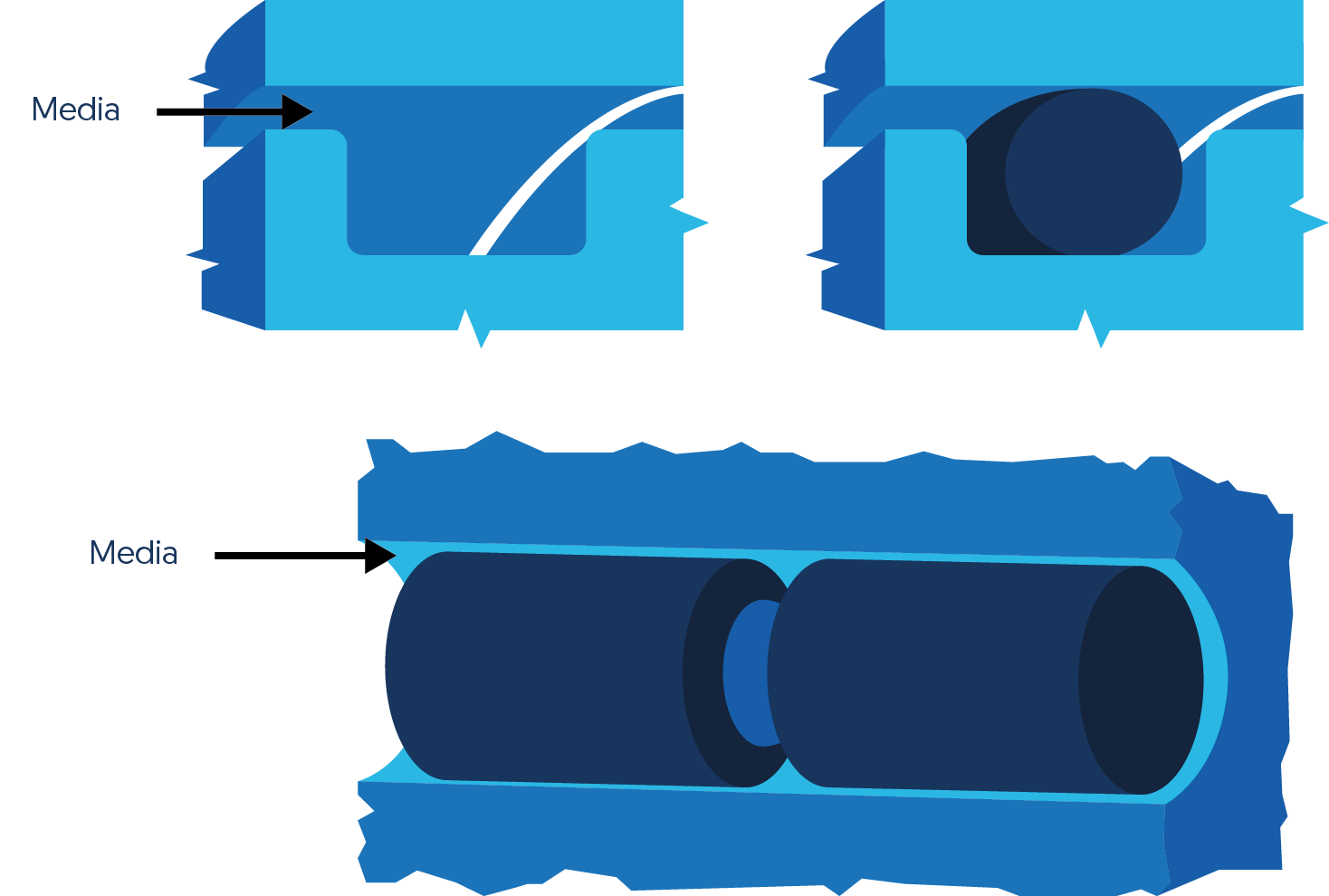
The tendency of an O-ring to return to its original shape when the cross section is deflected is the basic reason why O-rings make excellent seals. The squeeze or rate of compression is a major consideration in O-ring seal design. Elastomers may take up the stack-up of tolerances of the unit and its memory maintains a sealed condition. O-rings with smaller cross sections are squeezed by a higher percentage to overcome the relatively higher groove dimension tolerances.

3. Application Design
O-rings can be successfully used in static as well as dynamic applications.
A seal that does not move, except for pulsation caused by cycle pressure, is called a static seal.
Those seals that are subjected to movement are dynamic seals.
These are further defined as reciprocating (seals exposed to linear motion) and rotary (stationary seals exposed to a rotating shaft).
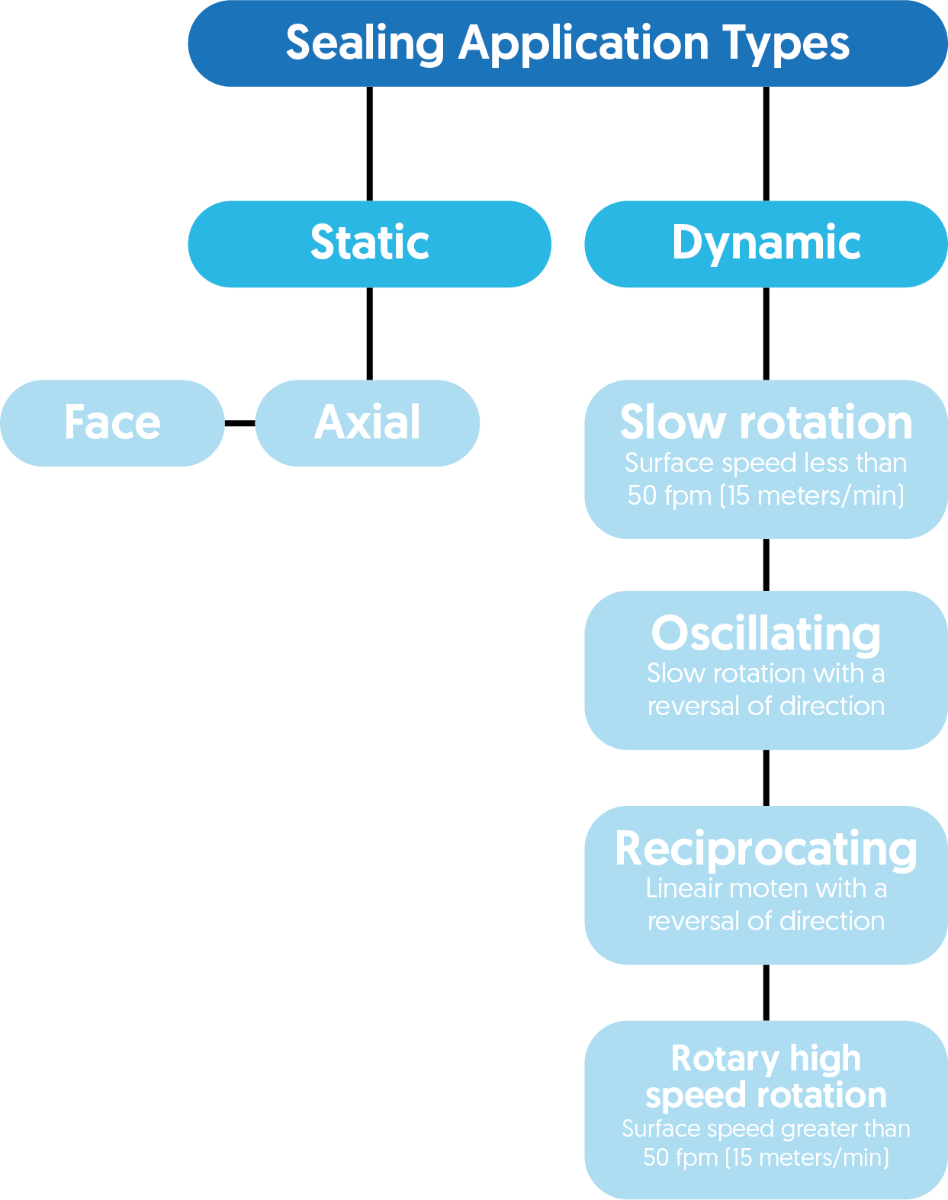
Static applications
There are four varieties of static applications: axial, radial, dovetail and boss seals.
| Picture | Application | Description |
|---|---|---|
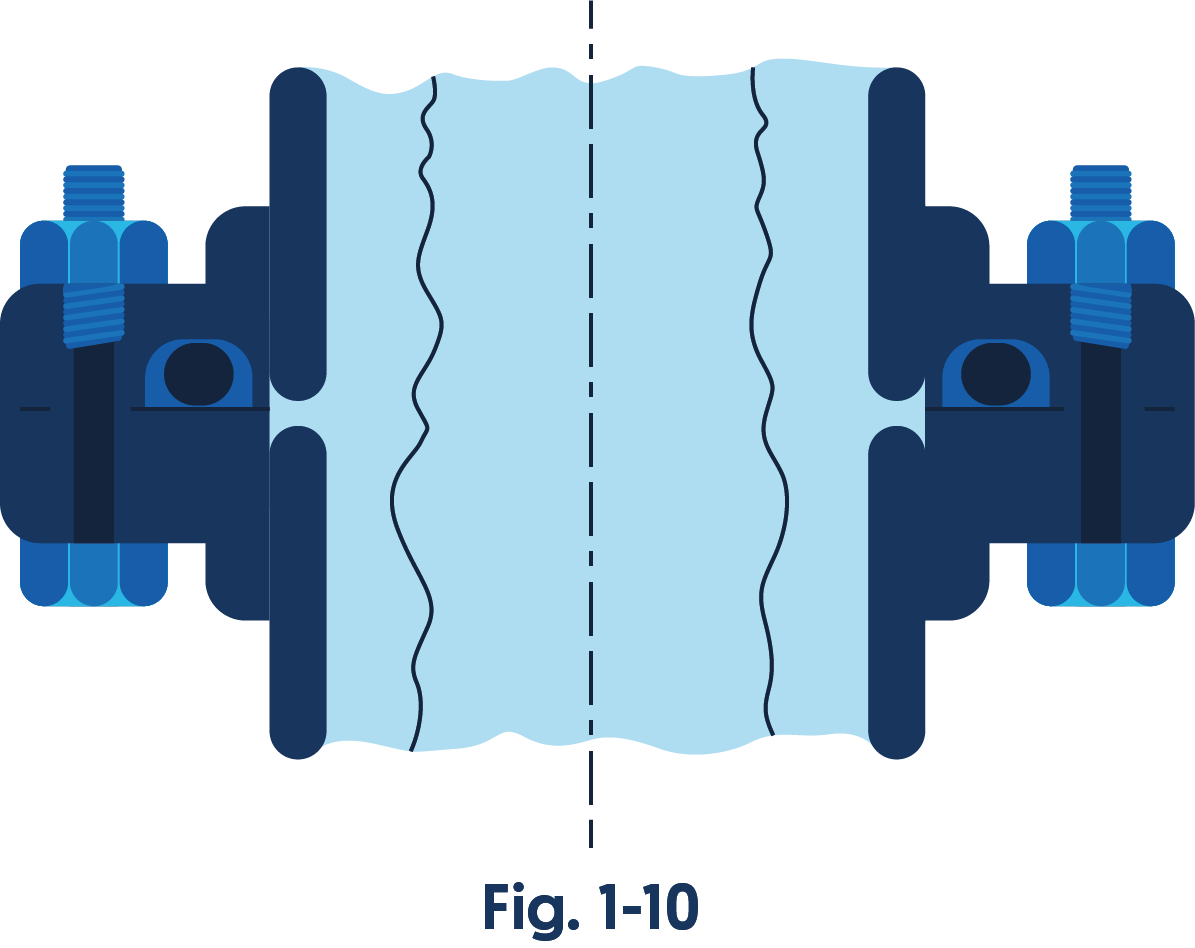 |
Axial | The O-ring cross section is squeezed axially in the groove similar to a flat gasket. |
 |
Radial | The O-ring cross section is squeezed radially in the groove between the inside (ID) and outside (OD). |
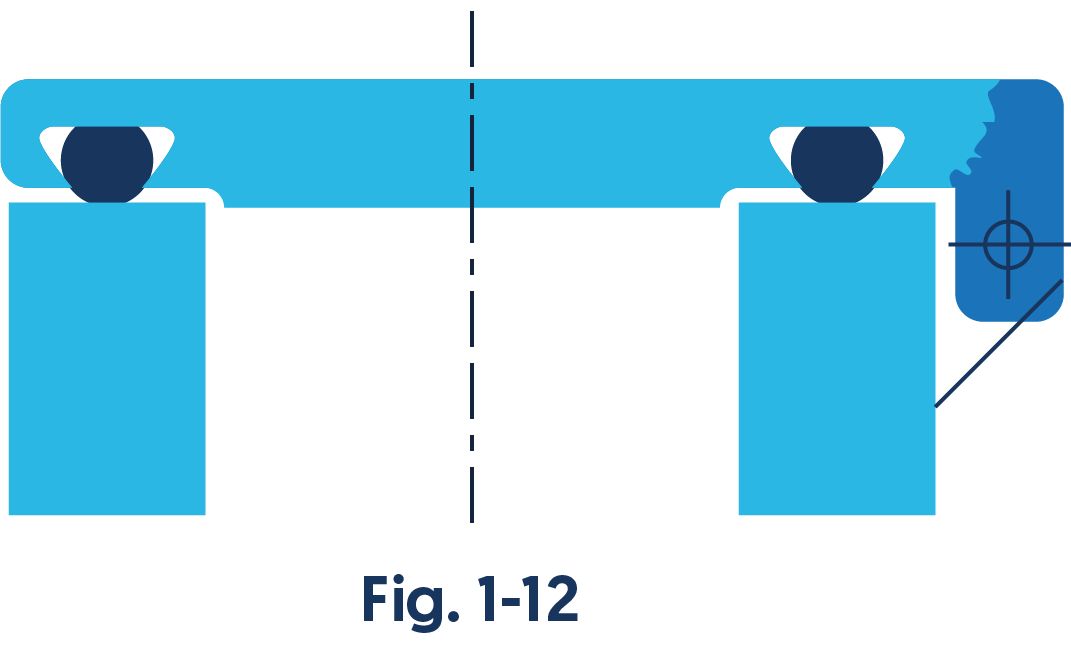 |
Dovetail | The O-ring is also axially squeezed in a dovetail groove. The groove design allows the O-ring to be retained in the face seal during assembly and maintenance. This is beneficial for special applications where the O-ring has to be fixed by the groove e.g. a lid which opens regularly. |
| Bosstail | The O-ring is used for sealing straight thread tube fittings in a boss. A boss is a cylindrical projection on a casting or forging. The end of that projection is machined to provide a flat, smooth surface for sealing. Straight threads used with an O-ring provide a better seal than tapered threads used alone. |
Dynamic applications
There are three varieties of dynamic applications: reciprocating, oscillating and rotary.
| Picture | Application | Description |
|---|---|---|
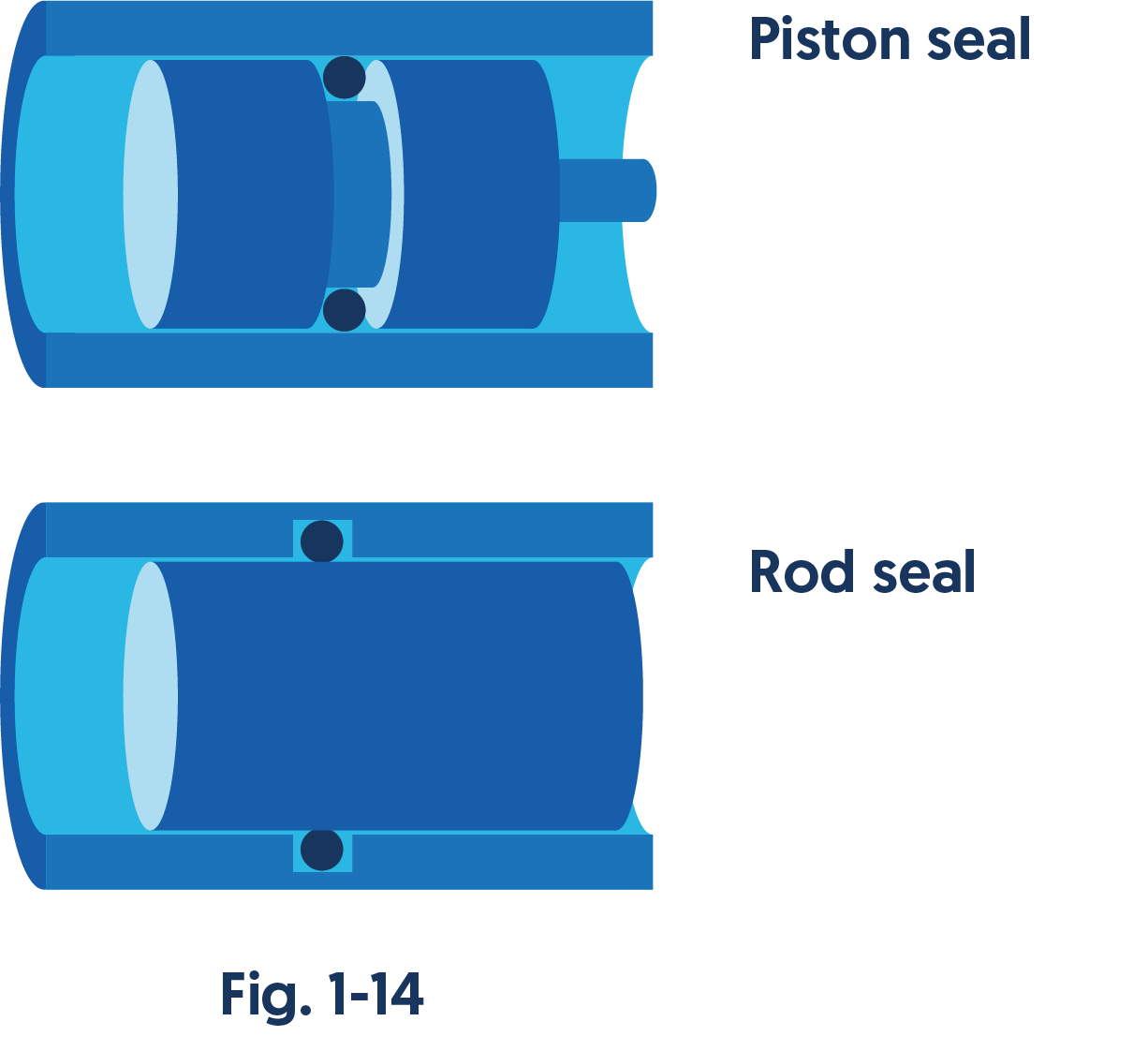 |
Reciprocating | Reciprocating seals refer to seals used in applications that slide back and forth. This motion introduces friction, which creates design considerations different from those of static seals. The O-ring may be housed in a groove (rod seal) in the cylinder wall instead of a groove in the piston surface (piston seal) without any change in design limitations or seal performance. |
 |
Oscillating | Oscillating applications are those seeing both rotary and reciprocating movement. A valve spindle is an example of an oscillating application. |
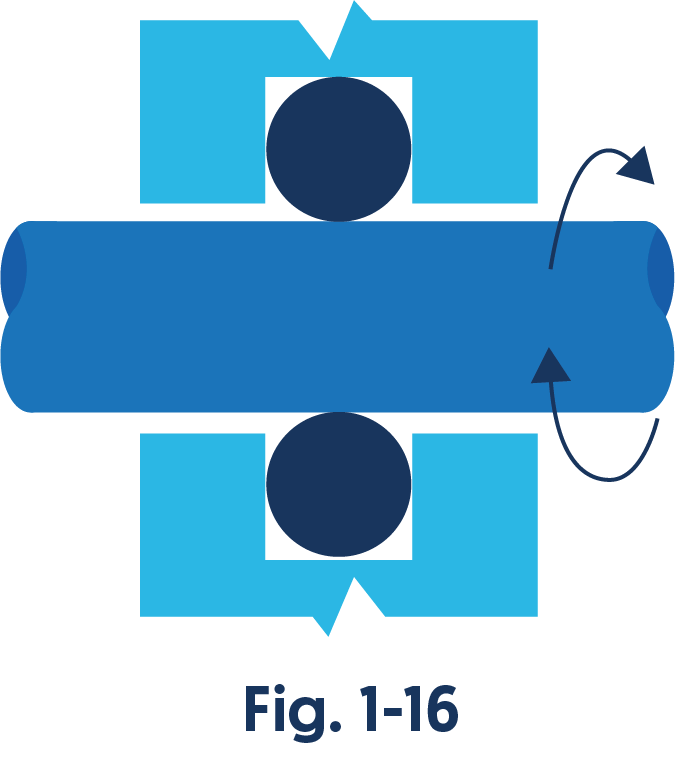 |
Rotary | Rotary seals refer to seals used in applications that rotate. |
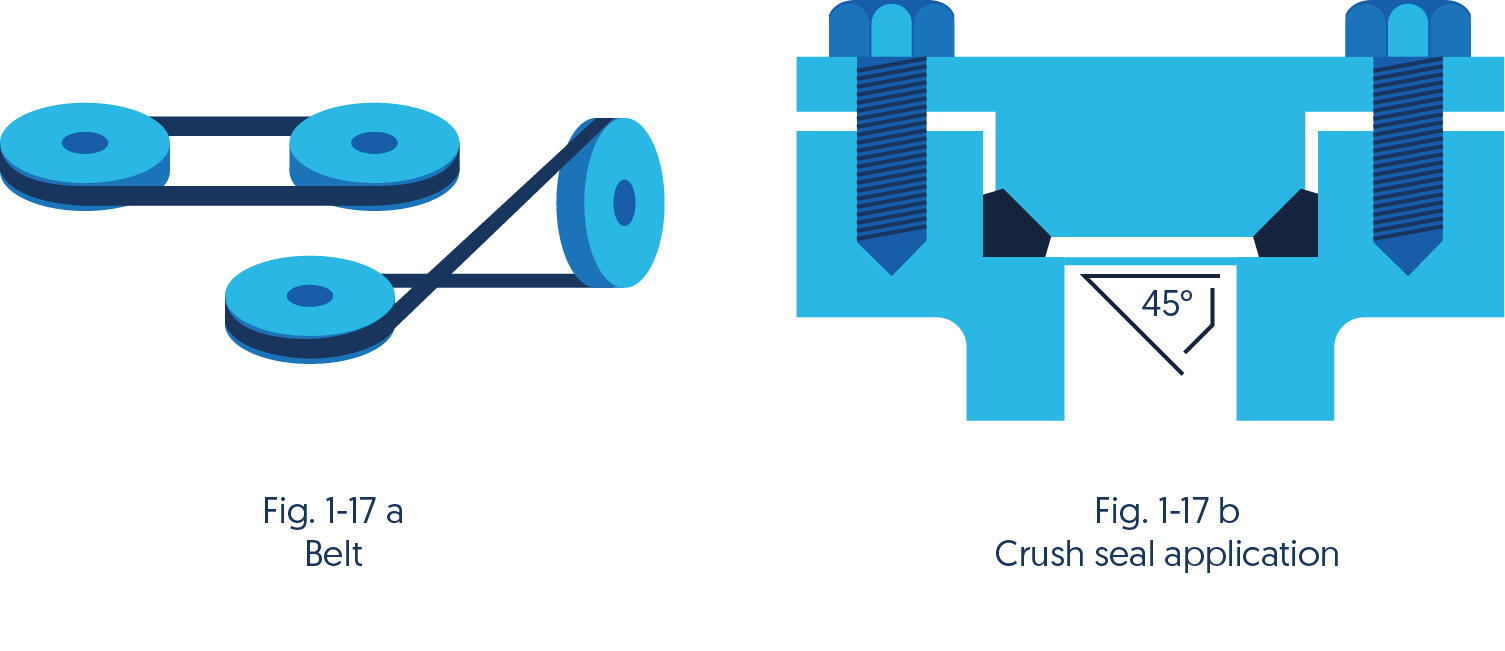 |
Miscellaneous applications | O-rings are used in a variety of applications. Wipers, buffers, and drive belt applications are just some of the examples. |
Squeeze or rate of compression of O-Ring
The tendency of an O-ring to return to its original shape when the cross section is deflected is the basic reason why O-rings make excellent seals.
The squeeze or rate of compression is a major consideration in O-ring seal design and differs per O-ring application design.
O-rings with smaller cross sections are squeezed by a higher percentage to overcome the relatively higher groove dimension tolerances.
In static applications the recommended squeeze is usually between 15-30%. In some cases the very small cross sections can even be squeezed up to 30%.
In vacuum applications the squeeze can even be higher. Squeezing more than 30% induces additional stress which may contribute to early seal deterioration.
In dynamic applications the recommended squeeze is between 8-16%; due to friction and wear considerations, smaller cross sections may be squeezed as much as 20%.
4. Material
Rubber materials or elastomers used in sealing applications are often described as compounds; meaning that they are a mixture of ingredients manufactured under specific conditions. A compound typically comprises a polymer, cross-link system, fillers and other ingredients used to achieve specific manufacturing-, application- or cost requirements.
The basis of compound design is a selection of the polymer type. To the elastomer, the compounder may add reinforcing agents, such as carbon black, colored pigments, curing or vulcanizing agents, activators, plasticizers, accelerators, antioxidants or antiradiation additives. There may be hundreds of such combinations.
Different circumstances demand various compound properties. That is why so many compounds have already been developed. We have categorised our compounds in standard- (general purpose), specialist-(industry or application specific) and high performance grades.
Hardness of elastomer
One of the most frequently named properties regarding polymer materials is hardness. Hardness is the resistance of a body against penetration of an even harder body of a standard shape at a defined pressure.
There are two procedures for hardness tests regarding test samples and finished parts made out of elastomer materials:
Shore A / D in accordance with ISO 868, ISO 7619-1, ASTM D 2240
Most elastomers are measured on the Shore A scale. Shore A hardness of 35 is soft; 90 is hard. Shore D gauges are recommended where the Shore A rating is greater than 90.
Durometer IRHD (International Rubber Hardness Degree) in accordance with ISO 48 , ASTM 1414 and 1415
The softer the elastomer, the better the seal material conforms to the surfaces to be sealed and lower pressure is required to create a seal. This is particularly important in low pressure seals that are not activated by fluid pressure. The softer the elastomer, the higher the coefficient of friction.
In dynamic applications however, the actual running and breakout friction values of a harder compound with lower coefficients of friction are higher because the load required to squeeze the harder material into the O-ring groove is much greater.
The softer the elastomer the more risk that at high operating pressure the elastomer of the O-ring will extrude into the clearance gap between the mating seal surfaces.
The harder materials offer greater resistance to flow. With an increase in temperature, elastomers first become softer and then eventually harder as the rubber curing process continues with the application of heat.
General Overview over the basic elastomers
Here you can find a general overview over the commonly used elastomers:
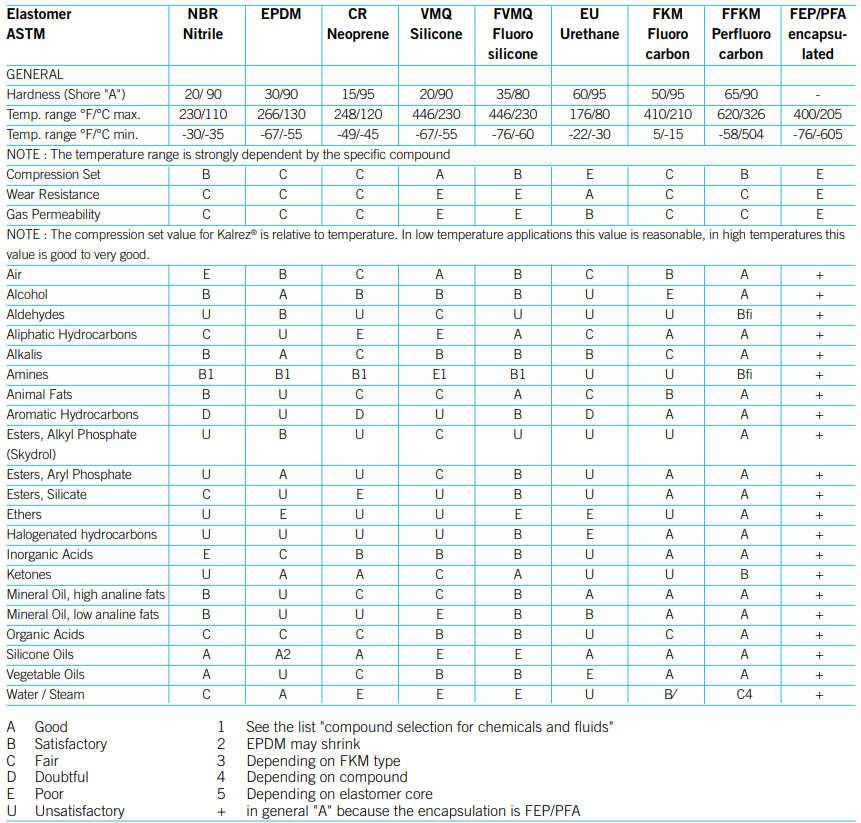
This information is only a guideline. Chemical compatibility lists should be consulted (here you can find the ERIKS Chemical Resistance Guide). ERIKS will provide this on request. Whenever possible the fluid compatibility of the O-ring compound should be rated "A". For a static seal application a rating "B" is usually acceptable, but it should be tested. Where a "B" rated compound must be used, do not expect to re-use it after disassembly. It may have swollen enough that it cannot be reassembled. When a compound rated "C" is to be tried, be sure it is first tested under the full range of operating conditions.
It is also particularly important to test seal compounds under service conditions when a strong acid is to be sealed at elevated temperatures because the rate of degradation of rubber at elevated temperatures is many times greater than the rate of degradation at room temperature.
Description of the most common basic elastomers
-
NBR - Acrylonitrile butadiene, Nitrile or Buna N
-
HNBR - Hydrogenated nitrile, or highly saturated nitrile
-
XNBR - Carboxylated nitrile
-
NBR/PVC - Nitrile/PVC resin blends
-
EPM, EPDM - Ethylene Propylene, and Ethylene Propylene Diene rubber
-
CR - Neoprene rubber Polychloroprene
-
VMQ - Silicone rubber
-
FVMQ - Fluorosilicone
-
AU, EU - Polyurethane rubber
-
FKM - Fluorocarbon rubber
-
FFKM - Perfluorocarbons
-
Teflon®-FEP/PFA
-
TFE/P (Aflas®) (FEPM)
What should be considered when selecting the right seal material
The primary fluids which the O-ring or Quad-Ring®/X-Ring will seal
Other fluids to which the seal will be exposed, such as cleaning fluids or lubricants
The suitability of the material for the application’s temperature extremes - hot and cold
The presence of abrasive external contaminants
Lubricating the seal and mating components with an appropriate lubricant before assembling the unit
If you don't know which size you need, our O-Ring-Calculator will help you find the right size.
If you don't know which o-ring is suitable for which industry, you will find all the information you need in the O-Ring Choosing Guide.
O-Ring-Calculator O-Ring Choosing Guide
5. Causes of o-ring damage and prevention
O-rings are available in many shapes and sizes. The O-ring that you choose should match your specific application. This prevents any unnecessary damage to your seal and avoids leaks. There are various reasons why leaks can occur in your application. Read here more in our guide about how to prevent damage to your o-rings.
6. Maintenance
Storage life is the maximum period of time, starting from the time of manufacture, that an elastomeric seal element, appropriately packaged, may be stored under specific conditions.
After this period of time the O-ring is regarded as unserviceable for the purpose for which it was originally manufactured.
The time of manufacture is the cure date for thermoset elastomers or the time of conversion into a finished product for the thermoplastic elastomers.
Shelf life of elastomers when stored properly is especially determined by the specific compound.
NBR, SBR or BR for example have a storage life of up to 5 years.
CSM, EPDM or EPM can be stored up to 10 years.
FMK, ACM or FVQM have a storage life of up to 20 years.
The storage life of different elastomers differs according to ISO 2230, indicating an initial and an extension storage period for unassembled components.
Factors that can influence the storage life of O-rings
Temperature:
Storage temperature should be below 38°C (except when higher temperatures are caused by temporary climate changes),
O-ring should be stored away from direct sources of heat (such as boilers, radiators, and direct sunlight).
Humidity:
If the elastomers are not stored in sealed moisture proof bags, the relative humidity should be less than 75 % (65 % with polyurethanes).
Light:
Especially direct sunlight or artificial light with ultraviolet content should be avoided;
it is advisable that storage room windows should be covered with a red or orange coating if there are elastomers present.
Radiation:
Protection from all sources of ionizing radiation that might cause damage.
Ozone:
Ozone is damaging to some elastomeric seals, equipment such as mercury vapor lamps,
high voltage electrical equipment, silent electrical discharges compustion gases or organic vapor should be avoided.
Deformation:
Seals should be stored away from superimposed tensile and compressive stresses or other causes of deformation. O-rings of large inside diameter shall be formed into at least three superimposed loops so as to avoid creasing or twisting.
Note: It is not possible to achieve this condition by forming just two loops, three are required.
Contact with liquid and semi-solid materials:
For example contact with gasoline, greases, acids, disinfectants, and cleaning fluids - these should be avoided -
unless they are an integral part of the component or the manufacturer’s packaging.
Contact with metals:
Certain metals and their alloys (especially copper, manganese, and iron) are known to have deleterious effects on elastomers. Protection by individual packaging is recommended.
Contact with dusting powder:
Dusting powders shall only be used for the packaging of elastomeric items in order to prevent blocking or sticking.
In such instances, the minimum quantity of powder to prevent adhesion shall be used.
Contact between different elastomers:
Should also be avoided.
Elastomeric seals bonded to metal parts:
The metal part of bonded elastomeric seals shall not come in contact with the elastomeric element of another seal. The bonded seal shall be individually packaged.
Any preservative used on the metal shall be such that it will not affect the elastomeric element or the bond to such an extent that the seal will not comply with the product specification.
Stock rotation:
Elastomeric seal stock should be rotated on the FIFO (First In, First Out) principle.
In general ERIKS recommends the following storage parametres:
✔ Ambient temperature (preferably not higher than 25°C)
✔ Dry environment and exclusion of contamination
✔ Protection against direct sunlight
✔ Protection against radiation
✔ Protection against artificial light or other light sources containing UV-radiation
✔ Protection from ozone generating electrical devices
✔ Store part without tension (never hang O-rings!)
7. Installation
Improper O-ring installation can lead to assembly damage which causes leakage during the first pressure test.
If the system does not pressurize correctly, the entire piece of equipment has to be disassembled and seals must be replaced.
Lubrication makes the installation easier
Lubricating reduces friction between the O-ring and the mating surfaces so that the O-ring can go into the groove without difficulty. It will also reduce the installation force and enable a smooth transition because the piston is inserted in the bore.
Besides making the installation easier, lubrication also protects the O-Ring from abrasion and scuffing damage while also extending the operating life of the O-ring by creating a protective barrier over its surface.
A thin film of mineral oil, grease, silicone oil, or application fluid is usually
sufficient
Proper size of the O-Ring is essential
If you choose the wrong size for the O-ring for your application, it might lead to damage.
This is why it is important to verify the right size of your O-ring. If you are not sure about which size you have to buy,
our O-Ring Calculator will help you to find the suitable size.
Hygiene
Cleanliness is important for proper seal action and long O-ring life. Foreign particles in the gland may cause leakage and can damage the O-ring.
Never glue the O-rings in the groove
There is a risk for chemical attack and hardening. An alternative is to use mounting grease. One should check the chemical compatibility first.
The stretch and expansion of the inner diameter should be considered
An inner diameter stretch as installed in a groove may not be more than 5-6% because more stretch will reduce and flatten the cross section and thus reduce the squeeze.
The inner diameter expansion to reach the groove during assembly should not exceed 50%. For very small diameters, it may be necessary to exceed this limit,
If so, one should allow sufficient time for the O-ring to return to its normal size before closing the gland.
Avoid installation damage by using installation tools
If you do not use the correct tools to install an O-ring, your O-ring might become damaged when it is fitted. Avoid sharp parts that may damage the O-ring.
Use an O-ring assembly set when installing or removing O-rings. This way you can install your O-rings more easily and remove them without causing damage.
Also be cautious to not overstretch your O-ring excessively or to twist it when fitting.
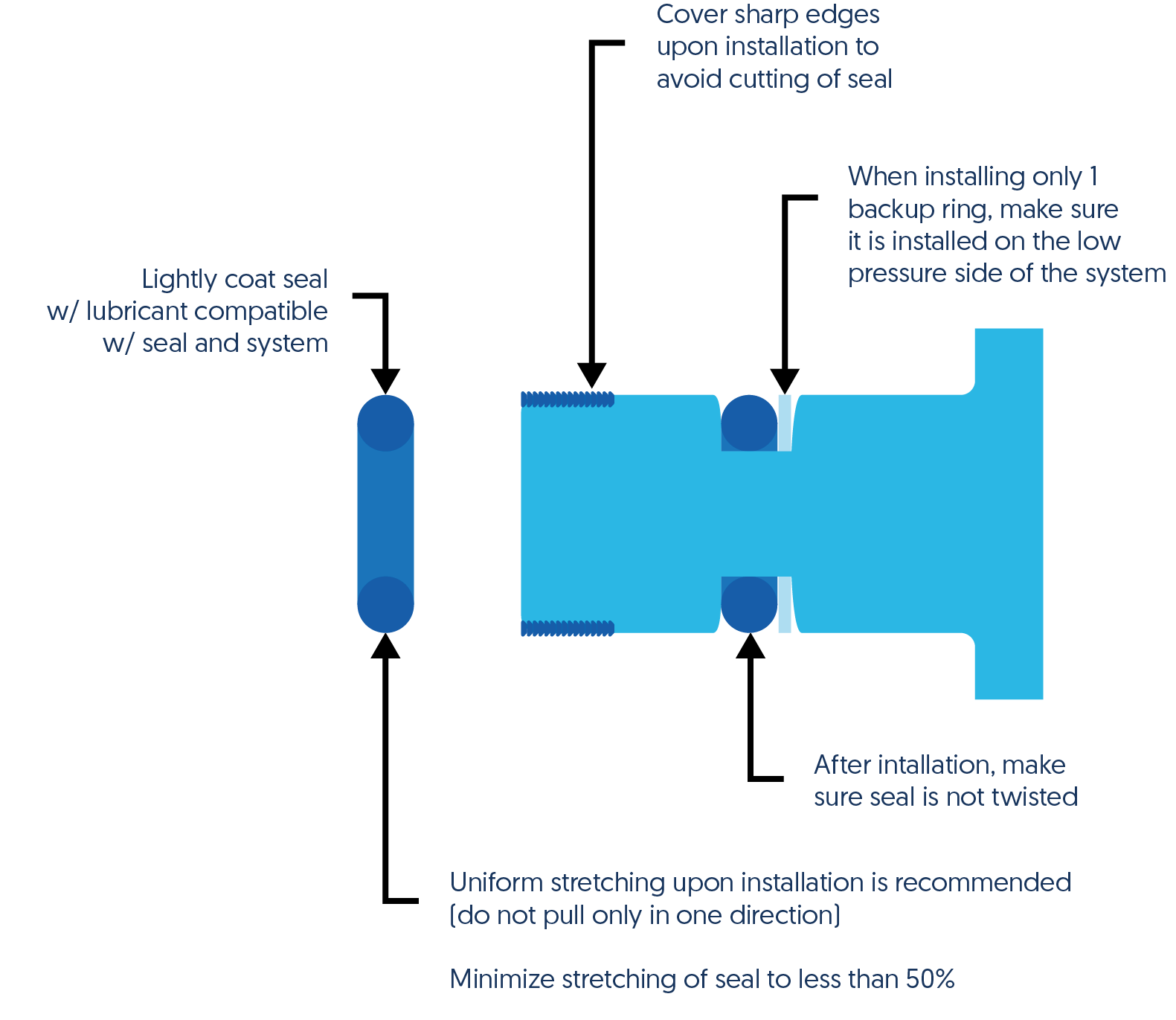

Do you have questions about our products?
For personal advise and product knowledge, visit an ERIKS location near you or contact our product specialists.
Find a service center | Call our Customer support | Send us an e-mail



